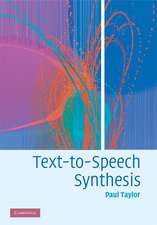Verification and Validation of Real-Time Software
Editat de William J. Quirken Limba Engleză Paperback – 6 dec 2011
Preț: 332.39 lei
Preț vechi: 415.49 lei
-20% Nou
Puncte Express: 499
Preț estimativ în valută:
63.61€ • 69.07$ • 53.43£
63.61€ • 69.07$ • 53.43£
Carte tipărită la comandă
Livrare economică 22 aprilie-06 mai
Preluare comenzi: 021 569.72.76
Specificații
ISBN-13: 9783642702266
ISBN-10: 3642702260
Pagini: 260
Ilustrații: XII, 246 p.
Dimensiuni: 170 x 244 x 14 mm
Greutate: 0.42 kg
Ediția:Softcover reprint of the original 1st ed. 1985
Editura: Springer Berlin, Heidelberg
Colecția Springer
Locul publicării:Berlin, Heidelberg, Germany
ISBN-10: 3642702260
Pagini: 260
Ilustrații: XII, 246 p.
Dimensiuni: 170 x 244 x 14 mm
Greutate: 0.42 kg
Ediția:Softcover reprint of the original 1st ed. 1985
Editura: Springer Berlin, Heidelberg
Colecția Springer
Locul publicării:Berlin, Heidelberg, Germany
Public țintă
ResearchCuprins
1 Introduction.- 1.1 Real-time software and the real world.- 1.2 The characteristics of real-time software.- 1.3 Problems of real-time software.- 1.4 Experience to date.- 1.5 Design for reliability.- 1.6 Outline of this report.- 2 Software Reliability and the Software Life Cycle.- 2.1 Real-time system development environments.- 2.2 Traditional system development phases.- 2.3 Verification and validation.- 2.4 Unified system development environments.- 2.5 Current real-time application examples.- 2.6 Conclusions.- 3 Structural Analysis and Proof.- 3.1 Structural analysis.- 3.2 Proving techniques.- 3.3 Fault tree analysis.- 3.4 Review techniques.- 3.5 Conclusions.- 4 Systematic Testing.- 4.1 Practical aspects of testing real time programs.- 4.2 Glass box testing.- 4.3 Black box testing.- 4.4 Hierarchic testing.- 4.5 Test data.- 4.6 Test evaluation.- 4.7 Use of tools.- 4.8 Conclusion.- 5 Statistical Testing of Real Time Software.- 5.1 When to apply statistical testing techniques.- 5.2 The statistical test aim.- 5.3 Simple cases.- 5.4 Reliability growth models.- 5.5 Testing large systems.- 5.6 Testing of diverse systems.- 5.7 Problems with large tests.- 5.8 Conclusions.- 6 Simulation and System Validation.- 6.1 Simulation of plant as a testing aid.- 6.2 Simulation of the system itself.- 6.3 Conclusion.- 7 Conclusion.- 7.1 Review of the problem.- 7.2 The methods reported.- 7.3 Hints for practical use.- 7.4 Final remark.- References.- Appendix I Proof of formula 5.7.- Appendix II Derivation of formulae 5.8 through 5.11.- Appendix III Proofs of formulae 5.14 through 5.17.













